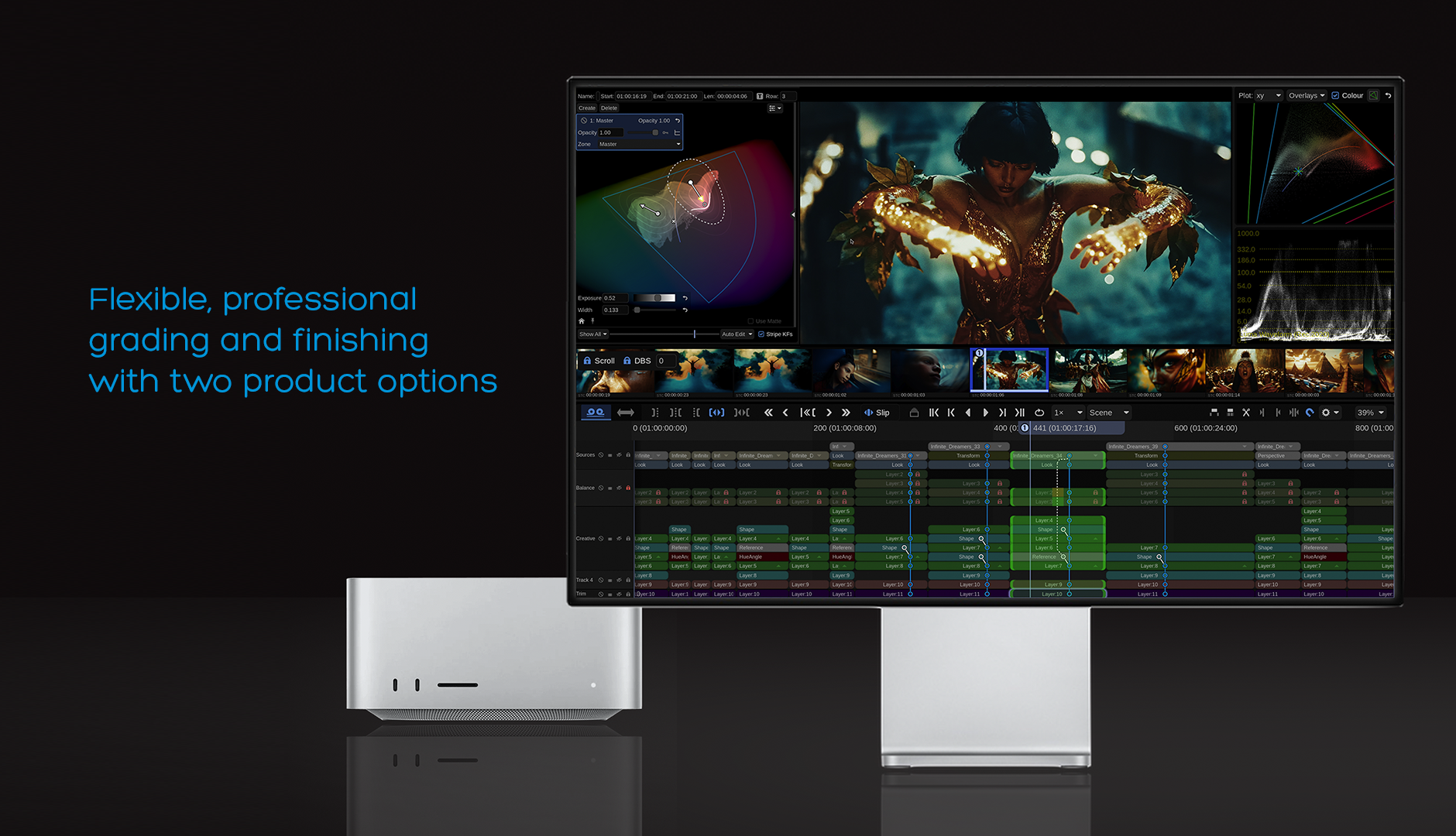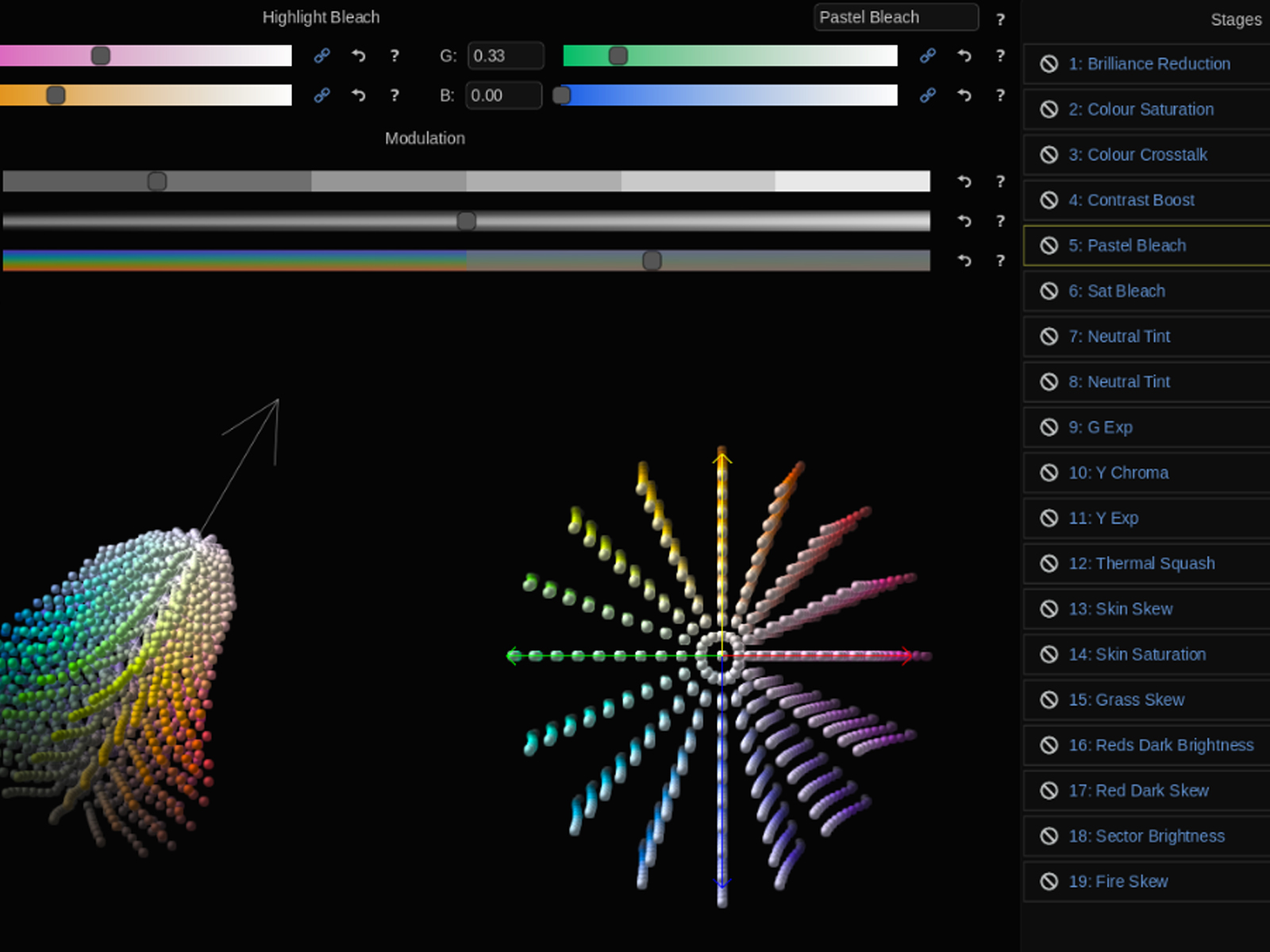
FilmLight Baselight: Complete Buyer's Guide
Premium color grading platform for high-end theatrical and broadcast workflows
FilmLight Baselight positions itself as a premium color grading platform targeting high-end theatrical and broadcast workflows, with selective AI capabilities designed for professional post-production environments.
Market Position & Maturity
Market Standing
FilmLight maintains a premium-tier position in the professional color grading market, focusing on high-end theatrical and broadcast workflows rather than broad market accessibility.
Company Maturity
The company's annual subscription model with both node-locked and floating license options, including free licenses for BLG rendering, indicates mature commercial operations.
Growth Trajectory
Innovation trajectory includes REMOTE collaboration capabilities addressing cloud workflow demands and the RENDER API for scalable processing automation.
Industry Recognition
Dolby Vision certification and IMF mastering capabilities, supported by Truelight color science implementation, position it among facilities processing premium content for theatrical distribution [128][130].
Strategic Partnerships
Established relationships with premium facilities, including Technicolor-PostWorks, ITV Studios, and independent film productions requiring advanced HDR capabilities [129][134][130].
Longevity Assessment
Substantial infrastructure investment and technical expertise required for optimal deployment suggest long-term viability for high-end facilities.
Proof of Capabilities
Customer Evidence
FilmLight demonstrates proven capabilities through established relationships with premium facilities including Technicolor-PostWorks, ITV Studios, and Picture Head, showcasing deployment across theatrical, broadcast, and independent film productions [129][134][130].
Quantified Outcomes
ITV Studios streamlined Coronation Street grading operations using bidirectional AAF workflows, eliminating re-rendering requirements for episodic content [129].
Case Study Analysis
Picture Head completed Kaboom's 4K DI using Baselight for integrated VFX compositing, eliminating separate conform and grading passes [130].
Market Validation
Customer evidence demonstrates established relationships with premium facilities, including Technicolor-PostWorks, ITV Studios, and independent film productions requiring advanced HDR capabilities [129][134][130].
Competitive Wins
Baselight wins in high-end theatrical workflows requiring Dolby Vision certification, custom AI integration, and advanced color science implementation.
Reference Customers
Technicolor-PostWorks, ITV Studios, Picture Head [129][134][130].
AI Technology
FilmLight's AI implementation centers on three specialized tools designed for professional grading challenges rather than broad automation. Face Track provides ML-based facial detection and tracking using polygon mesh technology [118][119][123][125].
Architecture
The platform's Linux-centric architecture provides full feature access, though macOS versions offer alternative deployment options with some functionality restrictions [128][135].
Primary Competitors
DaVinci Resolve
Competitive Advantages
Face Track's mesh-based tracking potentially offers advantages over DaVinci Resolve's planar Magic Mask methods [118][128].
Market Positioning
FilmLight focuses on premium facilities with dedicated technical teams and substantial infrastructure budgets, while DaVinci Resolve targets broader market accessibility.
Win/Loss Scenarios
Baselight wins in high-end theatrical workflows requiring Dolby Vision certification, custom AI integration, and advanced color science implementation. DaVinci Resolve typically wins for cost-sensitive deployments.
Key Features

Pros & Cons
Use Cases
Integrations
Pricing
Featured In Articles
Comprehensive analysis of AI Color Grading Tools for AI Design for AI Design professionals. Expert evaluation of features, pricing, and implementation.
How We Researched This Guide
About This Guide: This comprehensive analysis is based on extensive competitive intelligence and real-world implementation data from leading AI vendors. StayModern updates this guide quarterly to reflect market developments and vendor performance changes.
137+ verified sources per analysis including official documentation, customer reviews, analyst reports, and industry publications.
- • Vendor documentation & whitepapers
- • Customer testimonials & case studies
- • Third-party analyst assessments
- • Industry benchmarking reports
Standardized assessment framework across 8 key dimensions for objective comparison.
- • Technology capabilities & architecture
- • Market position & customer evidence
- • Implementation experience & support
- • Pricing value & competitive position
Research is refreshed every 90 days to capture market changes and new vendor capabilities.
- • New product releases & features
- • Market positioning changes
- • Customer feedback integration
- • Competitive landscape shifts
Every claim is source-linked with direct citations to original materials for verification.
- • Clickable citation links
- • Original source attribution
- • Date stamps for currency
- • Quality score validation
Analysis follows systematic research protocols with consistent evaluation frameworks.
- • Standardized assessment criteria
- • Multi-source verification process
- • Consistent evaluation methodology
- • Quality assurance protocols
Buyer-focused analysis with transparent methodology and factual accuracy commitment.
- • Objective comparative analysis
- • Transparent research methodology
- • Factual accuracy commitment
- • Continuous quality improvement
Quality Commitment: If you find any inaccuracies in our analysis on this page, please contact us at research@staymodern.ai. We're committed to maintaining the highest standards of research integrity and will investigate and correct any issues promptly.